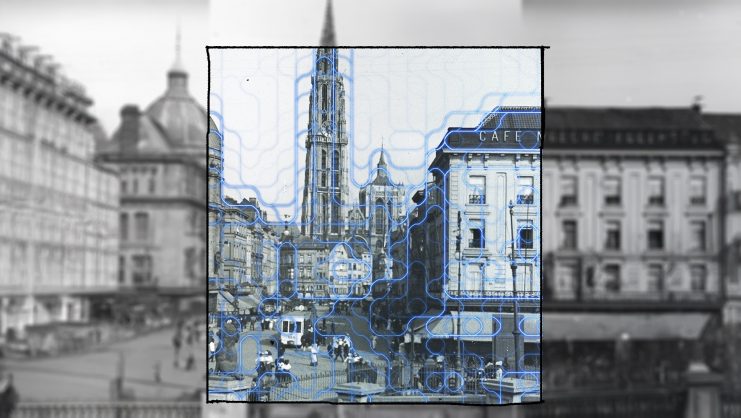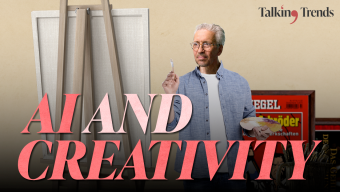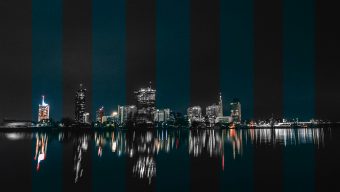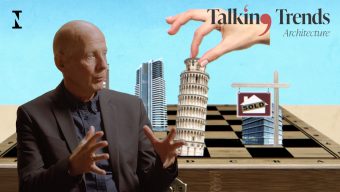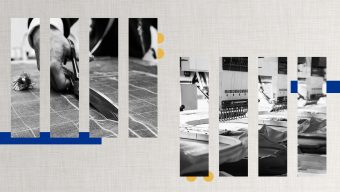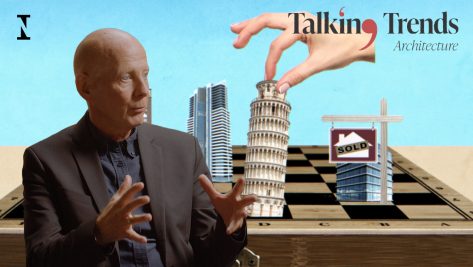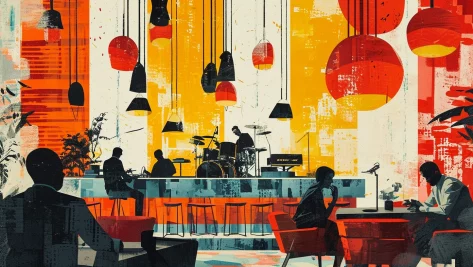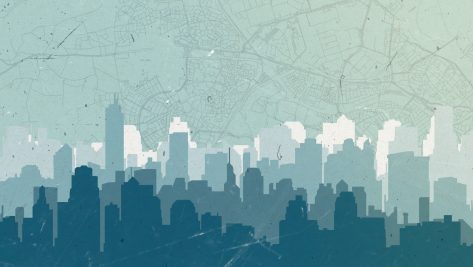AI, Creativity, and Design: Talking Trends
How can we spark creativity in our work? Stefan Kiefer, Founder of Hongkong Studios, sits down with David Goodman to discuss handling pressure, how meditation helps his work, and AI’s impact on the arts.
© IE Insights.
Transcription
David Goodman: Stefan, thank you so much for being here today.
Stefan Kiefer: Thank you for having me.
So I’d like to ask you about creativity. We often deal with a tension I think when we talk about creativity across fields, on the one hand, we have the specific knowledge of working, let’s say in painting or illustration versus architecture or fashion design. And then on the other hand, we have transversal kind of creative abilities that apply in general to creative fields.
I wonder, how do you see this tension between general design skills and specific design skills in your work?
So the skills are one thing. The talent is another thing. The determination to explore creativity within oneself, I think that’s the most important thing. As you might know, I’m a long-standing meditator, and that’s the basis of my creativity, actually. But everybody who wants to be creative can be so. Joseph Beuys once said “everybody is an artist”.
And even working as whatever you work in life is creative. Every action, every thing you do can be creative when you consider it like that. So for me, there’s no contradiction between creativity and whatsoever field you’re working. You’re just creative if you recognize yourself as somebody who is creative.
So specifically, how does that work in your own personal creative process.
To develop creativity, I think it’s a game between pressure and non pressure. You need to have some time pressure when you have a certain job to do in a certain time. I mean, I designed covers for a worldwide renowned magazine, and I had to get out my creative pad every week. And not just one design, but sometimes ten or even more.
And I had the pressure of my editors and chief behind me. They were standing right next to me, pushing hard. Now be creative. You cannot push a button and be creative in that very moment, but you can step back and move out of the pressure and then it might come. But there are also certain techniques. I mean, when you are a painter, you have a white canvas and you sometimes don’t know how to start.
So you need to start from a certain point and just continue that idea. And sometimes, what I also found out in my creative life, intuition is a very strong influence. I mean, we were just talking before about this huge, enormous opera house in Hamburg, where I come from. By Herzog & de Meuron these famous Swiss architects, and they just had this one simple idea of this wave, because the building is sitting in the middle of the harbor and they developed that.
And so you just need a starting point and develop that from there. And then creativity can unfold.
So there’s something about that intuition which, I think often is used to in a way to discourage people sometimes from designing. Thinking “well, I don’t have this intuition or I don’t have the sensibility”
Or vision
Vision right. And when in reality, there are many methods for building creativity, exercising it. I mean, this goes from the Dadaists who would cut up poetry, or even like Brian Eno, who had these kind of cards, the oblique strategies, which were methods and it kind of demystifies it. When you talk about creativity as the sort of thing being inside, I wonder, are there practical tools or methods or steps that you use to get the intuition going?
Yes, this is my practice since 50 years. I’m a meditator, and I do transcendental meditation every day for 50 years. And I just go inside, dive deep inside, and then it comes. It’s such a simple process, really. Imagine you are in a certain situation where you feel the pressure and you need to have an idea, and you still need to avoid that pressure, because when the pressure is overwhelming, nothing will come.
So it’s the balance, as I said before, between pressure and non pressure. So you have to move back and forth and find the right way through this jungle of possibilities. A good technique is taking a shower when you don’t have an idea or take a short walk, go outside of the building, or just do something else and then come in fresh and have some sort of restart.
I mean, when your computer is not working, you push the restart button. Same thing. This is a certain technique I always used and I’m still using in all the different fields where I’ve been working creatively.
I would like to go back to your work with the magazine, because one of the things that strikes me as a challenge is to do two things simultaneously that are almost contradictory because it needs to be different. It needs to somehow reflect current events or the content of each individual issue, but it also needs to be part of a series, right?
Or it needs to be understood and be part of a family. And those might be contradictory. I wonder, how did you, how do you balance those contradictory needs?
I’m not doing it any more. It’s ten years ago but I did it for 18 years, and I guess I designed more or less 10,000 covers. And of course, there’s a routine. There’s a professionality, you have a good team. You have a picture editor, you have some sources of inspiration. So there are definitely certain tools, but I’ve never used any, as you mentioned, there are certain creativity tools or techniques. I just found my own way, and I think this is more the artistic way because I was a trained illustrator and painter, and for me it needs to be simple and straightforward, and I don’t need to follow a zigzag course like many others might use this technique today and the other one tomorrow.
And this was really a stressful time in my life, really, I can tell. But it was a wonderful, challenging and also a good time because you could see your work every week printed in 1 million copies and spread out throughout the whole world, and you could be proud of it. And this also enhances your creativity because you know it will be seen, it will be visible, what you are doing.
It will not go away in a second, but it’s there at least for a week it will be in the public and this is also some sort of inspiration in finding out what the right way is, as you describe, between the tradition of a, when I was there already 50 or 60-year-old magazine, but many, many great covers before my time as the art director, there was definitely pressure.
So we’re on the threshold of a huge change in the way we make things. We may already be inside that change.
I know what’s coming.
And we can’t avoid it. Artificial intelligence is here. We’re constantly being told, and I sometimes feel that we in the creative arts we’re being singled out as being singularly affected by it, when in reality, we’re all affected by it. This is my personal theory that it happened to be one of the first and most visible applications.
The people saw Midjourney and suddenly jump to conclusions about the threat that it presented for people working in the arts. But I wonder how you see it, as a mortal threat, as some kind of useful tool, as indifferent?
To be honest, I only tried it once. My son-in-law said, you have to check this out, Midjourney. We prompted a sentence like, show me a businessman buried under piles of papers, sitting on his desk and painted in the style of Caravaggio. Twenty seconds later we had four completely different images, each of them perfectly painted, completely different.
And my 20 or 30-year-old experience as an art director, a painter, illustrator, my ten-year long studies or 7 or 8 years I was studying crushed to dust within 20 seconds, it was gone. I’m not doing it anymore anyhow, so I’m not a painter anymore. But this was really scary. And at that point I thought, where will this lead us really?
And for the illustration community, I work with many illustrators worldwide. It’s a disaster because they will lose their jobs. But guess what? Like 20 years ago when the Macs came up, maybe even longer 30 years ago, I started working with a Mac early on from 81 or 82, the first Macintosh computer. It changed my career as well.
Tremendously. And there might be some good outcome in the end that AI is helping us to develop even more creativity and be more effective with what we do. But if I were an art director still, and I would have to come up with an idea within seconds, I’m almost sure I would use it probably as an inspiration but not for the final artwork. You cannot do that. It’s a sin, really. I’m sorry to say that, but where will this lead us if AI takes over?



